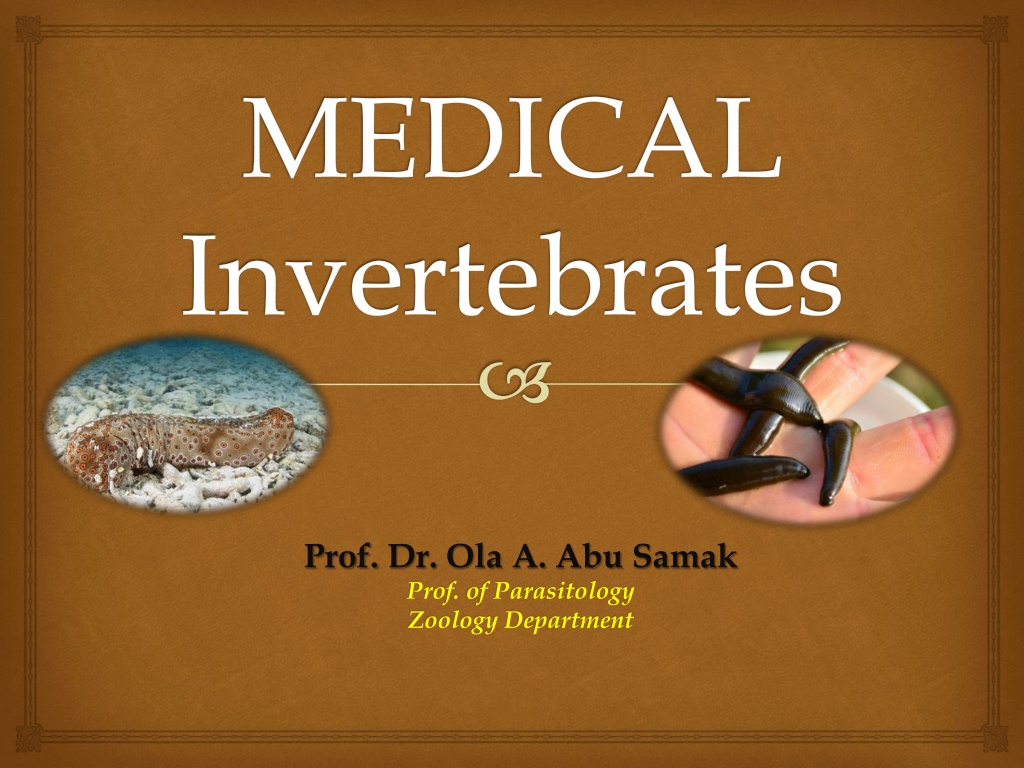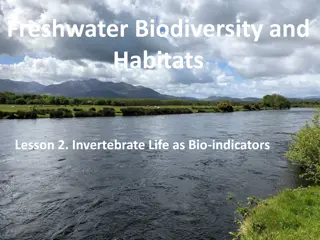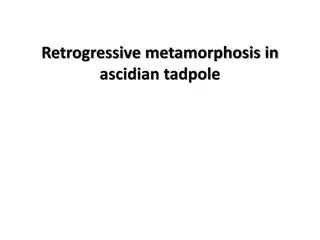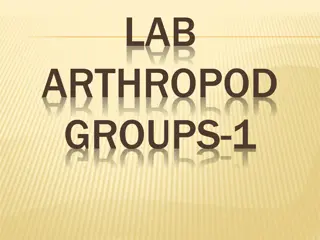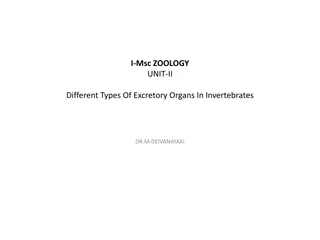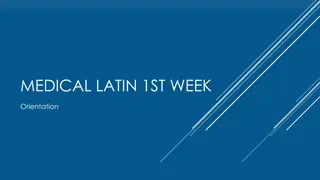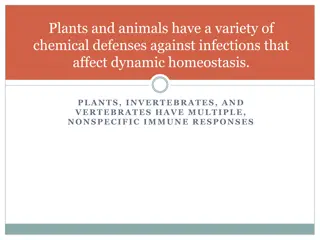Medical Invertebrates Course Overview
This course on Medical Invertebrates, led by Prof. Dr. Ola A. Abu Samak, provides an in-depth exploration of various invertebrate animals, their anatomy, physiology, and medical significance. Students will learn about the natural history, taxonomy, and infectious diseases of invertebrates, utilizing microscopy and scientific models to study their health and ecosystems. The curriculum covers a wide range of invertebrate groups, from sponges and insects to echinoderms, preparing students to identify and understand the importance of these organisms in biomedical research and ecological systems.
Uploaded on Sep 20, 2024 | 0 Views
Download Presentation

Please find below an Image/Link to download the presentation.
The content on the website is provided AS IS for your information and personal use only. It may not be sold, licensed, or shared on other websites without obtaining consent from the author. Download presentation by click this link. If you encounter any issues during the download, it is possible that the publisher has removed the file from their server.
E N D
Presentation Transcript
MEDICAL Invertebrates Prof. Dr. Ola A. Abu Samak Prof. of Parasitology Zoology Department
COURSE SPECIFICATION 0 ) 1 Medical Invertebrates 2 ( / : 2 : / : : 218 : : 1 : : : By the end of this course the student must be able to: : 2 Use pertinent biological information as well as state of science information pertaining in the field of invertebrate animal medicine to develop the familiarity with importance of invertebrates in biomedical research and ecosystems. 3 - : By the end of this course the student must be able to: a1. Identify the general concepts of natural history and taxonomy of certain invertebrates. a2. Identify the general information about anatomy and physiology of certain invertebrate groups. a3. Recognize the benefits as well as the environmental disorders and infectious diseases of certain invertebrate animals. a4. List the medically importance of certain invertebrates By the end of this course the student must be able to: b1. Report symptoms of infectious diseases to increase the familiarity with invertebrate importance. b2. Review the benefits as well as the environmental disorders to develop the familiarity with importance of invertebrates in ecosystems. By the end of this course the student must be able to: c1. Use the light microscope to identify the infectious diseases of certain invertebrate animals. c2. Examine various disorders in the selected examples of invertebrate animals to increase the information in the field of invertebrate animal medicine. By the end of this course the student must be able to: d1. Acquire self- and long life-learning during the study of the invertebrate medicine. d2. Apply scientific models, and tools effectively to understand the different symptoms of invertebrate diseases. : : :
Content W. 1 2 3 4 5 6 7 8 Topic Introduction Porifera (Sponges) Coelenterates Turbellarians Annelids Custaceans Midterm exam Insects Horseshoe Crabs Spiders Gastropods Cephalopods Bivalves Echinodermats Practical exam. Writing and oral exam. Lect 1 1 1 1 1 1 1 1 Pract 2 2 2 2 2 2 - 2 Tutor. 0 0 0 0 0 0 0 0 9 10 11 12 13 14 15 16&17 1 1 1 1 1 1 0 1 2 2 2 2 2 2 2 - 0 0 0 0 0 0 0 0
Turbellarians Quick Facts True bilateral symmetry. Dorso-ventral flattening of the body. Unsegmented. Ciliated epidermis. System of sheathed nerve fibers. Parenchyma between the epidermis and the gastrodermis. Some cephalization. Blind ending gut. Flame cells for excretion.
Turbellarians Quick Facts Turbellarians are mainly free-living and aquatic, but some are terrestial and live in moist, humid environments. They range in size from a few millimeters to a half meter long. Small turbellarians use cilia for their propulsive force, and some very small forms swim through fluid. A lot of energy is used for the production of mucus to lubricate and protect the surface of the body and to help capture prey. Most are hermaphroditic and reproduce sexually, but asexual reproduction by fission is also possible. If a flatworm is starved it is capable of shrinking to hatching size and when fed it has the ability to grow back to original size.
Turbellarians Quick Facts Turbellarians sense their environment with statocysts, chemoreceptors, and photoreceptors. They do not have image-forming eyes, but many species have pigment cells and photoreceptors concentrated into eyespots. The complexity of the turbellarian peripheral nervous system varies from a simple nerve net based on pairs of longitudinal nerve cords to an interlacing web of nerves capable of fine muscular control. Regeneration of somatic parts is well. Some of the colorful marine polycladids are in demand in the aquarium trade, and Dugesia is a common laboratory animal, but the vast majority of turbellarians are of little economic importance to humans. Humans can threaten turbellarian populations through pollution of aquatic habitats.
Turbellarians Temnocephalidae are ectoparasites on the body surfaces of some crustaceans. They have an adhesive disc and tentacles, but lack cilia.
Turbellarians The economic importance of Turbellaria HUMAN CONNECTIONS Since they breathe through their skin, terbellarians are sensitive to water quality and serve as indicators of reduced oxygen and other changes in their habitat. ECOSYSTEM CONNECTIONS Ecosystems are based on the tiny plants and animals that form the base of food chains. Turbellarians are an important link between the tiny, sometimes microscopic animals they eat and their own, larger predators, such as small fish, crayfish, and aquatic insect.
Turbellarians Humans can threaten turbellarian populations through pollution of aquatic habitats. Most species of freshwater turbellarian are at least moderately tolerant of polluted conditions. Tolerant species tend to live in areas where decaying organic matter causes the water to contain only a small amount of dissolved oxygen, which they absorb along the entire surface area of their bodies. In healthy ecosystems, turbellarians usually exist in low to moderate numbers. (bioindicator for water)
Turbellarians The economic importance of Planaria Planarians could revolutionize modern medicine. They can resist bacteria that are highly pathogenic in humans. They are also unique among invertebrates in that they display addiction-like behaviors to many drugs that are abused by humans. The planarian is often used as an animal model in neurological research. Specifically (because of their regenerative properties), researchers believe that studying them could lead to significant advancements in treatment for individuals with brain damage or other neurological diseases.
Turbellarians Planarians use as animal models in pharmacology.
